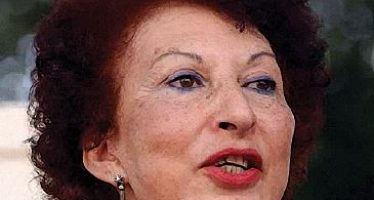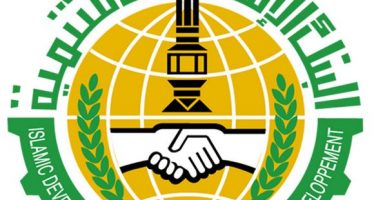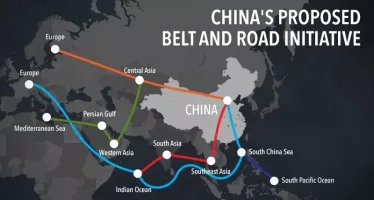MIGA (World Bank): Islamic Finance – A Growing Source of Capital for the Developing World
The World Bank has its eye on Islamic finance, and with reason.
 Islamic finance’s recent globalization – in both Muslim and non-Muslim countries alike – has increased the total size of its assets to around $1.5 trillion. In both the public and private sectors, transactions based on Sharia principles clearly have gained a place in global financial markets. The World Bank Group sees the historic and development significance of Islamic finance’s rise and is increasingly coordinating its efforts with respect to Islamic finance. Indeed, the World Bank, IFC (International Finance Corporation), and MIGA (Multilateral Investment Guarantee Agency) recently reported on closed and pipeline transactions in this arena to the group’s Board of Directors.
Islamic finance’s recent globalization – in both Muslim and non-Muslim countries alike – has increased the total size of its assets to around $1.5 trillion. In both the public and private sectors, transactions based on Sharia principles clearly have gained a place in global financial markets. The World Bank Group sees the historic and development significance of Islamic finance’s rise and is increasingly coordinating its efforts with respect to Islamic finance. Indeed, the World Bank, IFC (International Finance Corporation), and MIGA (Multilateral Investment Guarantee Agency) recently reported on closed and pipeline transactions in this arena to the group’s Board of Directors.
Importantly, last October, the World Bank announced the opening of the first Global Islamic Finance Development Center in Turkey, under the roof of Borsa Istanbul. This historic facility offers services that include information sharing on the development of Islamic finance, technical assistance, and harmonization initiatives. The creation of this center is a reflection of the global efforts to improve and standardize Islamic finance while contributing to ending poverty and boosting shared prosperity around the world using this increasingly important source of finance.
“Currently, MIGA is looking at several projects involving yet another type of Islamic finance – sukuk, or financial certificates representing bond issuances to the capital markets.”
For its part, MIGA – the political risk insurance and credit enhancement arm of the World Bank Group – has already supported two Islamic finance transactions, and is looking at several more. The first was a port project in Djibouti, for which the agency issued a contract of guarantee in 2007.
A New Port in Djibouti
The Doraleh Container Terminal involved the development, design, construction, management, and maintenance of a new container terminal port terminal in the city of Doraleh. The terminal has a total quay length of 2,000 meters and an annual handling capacity of 1.5 million 20-foot container equivalent units.
MIGA issued guarantees totalling $427 million for both the equity and debt portion of the terminal. Because the sponsor of the project – DP World of the United Arab Emirates – required that the transaction be financed through an Islamic finance structure, the financiers to the project, led by the Dubai office of the Standard Chartered Bank, put together a financing structure involving a Musharaka arrangement. Under a Musharaka agreement, sponsors and financiers collectively pool together resources (contract rights and capital respectively) to undertake a joint venture, or partnership, which is the literal meaning of Musharaka.
In the case of the Doraleh Container Terminal, the construction portion of the project was done through an Istisna’a arrangement whereby the financiers allow for cash payments in advance for the construction period in exchange for future delivery of the assets. The Musharaka venture appointed the project company to construct the terminal and ensure delivery of the assets to the joint venture at the end of the construction period.
Finally, the repayment of the financier’s capital was structured through an Ijarah lease arrangement whereby the financiers leased their portion of ownership in the assets back to the project company in exchange for rental payments linked to a floating benchmark. During construction, the rental payments were made in advance of the actual lease, creating an advance lease, or Ijara mawsoofah bil thima, and at the end of construction, the leasing contract buys out the assets in their entirety, at which point the financiers receive periodic lease payments. Early repayment of the financiers could be accomplished through either a put (purchase undertaking) or a call (sale undertaking), whereby the financiers’ portion of the partnership could be bought out at the original purchase price.
For MIGA, covering such a structure involved major contractual changes to its normal ways of covering a loan. The MIGA contract had to specify that the amounts covered included advance rental and rental under the Ijarah contract, any potential termination payment of the Istisna’a, any payment owed under the put option, and any additional amounts owed to the financiers under a potential unwinding of the Ijarah Musharaka.
Despite the complexities of the transaction, MIGA was able to provide the financiers with the comfort they required: both ongoing repayments of the financing and any potential early termination payments would be insured and covered for a political risk event. The Doraleh Container Terminal transaction was a major milestone for both the Republic of Djibouti – it represents half of the nation’s annual GDP – as well as for MIGA.
Mobile Network Expansion in Indonesia
In 2011, MIGA closed its second transaction supporting a project with an Islamic financing structure: A telecommunications project in Indonesia. For this project, MIGA provided political risk insurance to two financial institutions, Deutsche Bank Luxembourg and Saudi British Bank, for their $450 million financing to the Indonesia telecoms company PT Natrindon Telepon Selular, or NTS. The company was majority-owned by Saudi Telecom, and the deal formed part of an overall $1.2 billion financing to help NTS greatly expand its GSM network in Indonesia.
MIGA supported the transaction because the new financing helped the company increase network quality and expand coverage, getting telecommunications to lower-income segments of the Indonesian market as well as to remote islands of the archipelago.
Unlike the Djibouti transaction, which involved Musharaka financing, the NTS project involved a particular type of Islamic finance known as Murabaha financing that essentially involves a sale and purchase of commodities. There are four basic steps, which happen instantaneously, and four basic players: Financier buys commodities at market price from a commodity seller. Financier sells the commodities to the project company at a deferred price with a profit component, so that the sales price plus the profit component matches an amortization schedule on a loan. The project company sells the commodities to a commodity purchaser at the sales price. The commodity purchaser sells the commodity back to the original seller at the sales price.
Since this all happens instantaneously, the commodities never actually change hands, and the transactions are recorded by book entry only so that the financier directly funds the project company. However, though this mechanism, unlike a loan, there is no actual interest component, which is prohibited under Islamic law.
Although the concept is fairly simple, MIGA’s documentation was far from it. To add to the complexity, there were a number of novel issues to be addressed.
Challenges Overcome
 Consider these examples: First, there are three separate tranches of funding, and MIGA was covering a minority share of the financing, which had implications for MIGA’s policy covenants; second, two separate currencies were used, whereas the MIGA guarantee was only in US Dollars and the potential currency fluctuations needed to be tackled; third, there were challenging details to work out over coverage of principal and profit (analogous to the interest component of a conventional loan), which resulted in MIGA covering 100% of principal of a loan for the first time; fourth, in addition to the MIGA guarantees, the project involved sponsor guarantees, so it was necessary to ensure that there was no overlap in coverage; fifth, the financing was being syndicated after closing, and the banks wanted to ensure that syndicates could opt-out of MIGA cover; sixth, as the project company was responsible for paying the premium, special provisions and timing arrangements needed to be included for any instance where it may fail to do so; and seventh, MIGA had to obtain reinsurance from the private market, so all of these special provisions were subject to reinsurance approval.
Consider these examples: First, there are three separate tranches of funding, and MIGA was covering a minority share of the financing, which had implications for MIGA’s policy covenants; second, two separate currencies were used, whereas the MIGA guarantee was only in US Dollars and the potential currency fluctuations needed to be tackled; third, there were challenging details to work out over coverage of principal and profit (analogous to the interest component of a conventional loan), which resulted in MIGA covering 100% of principal of a loan for the first time; fourth, in addition to the MIGA guarantees, the project involved sponsor guarantees, so it was necessary to ensure that there was no overlap in coverage; fifth, the financing was being syndicated after closing, and the banks wanted to ensure that syndicates could opt-out of MIGA cover; sixth, as the project company was responsible for paying the premium, special provisions and timing arrangements needed to be included for any instance where it may fail to do so; and seventh, MIGA had to obtain reinsurance from the private market, so all of these special provisions were subject to reinsurance approval.
In the end, MIGA was able to tackle all of these issues successfully and to issue the agency’s first-ever contract of guarantee for Murabaha financing. This was an important demonstration of MIGA’s flexibility and – given the growing role of Islamic financial markets in supporting projects in developing countries – it was indeed a landmark transaction.
Currently, MIGA is looking at several projects involving yet another type of Islamic finance – sukuk, or financial certificates representing bond issuances to the capital markets. After having closed its first capital markets transaction using its non-honouring of sovereign financial obligations cover in support of Hungary’s Ex-Im Bank last October, there has been much interest in expanding the use of this application, including in the Islamic finance model. MIGA is currently in discussion with ICIEC, the political risk insurance arm of the Islamic Development Bank, on using this cover for sukuk issuances.
Islamic financial products are founded on sound principles including investing in a real asset, basing the yield on production or trade income rather than interest, and displaying risk and yield transparently. Islamic finance emphasizes asset-backing, thereby ensuring a direct link between financial transactions and real economic activities. It is also a more equitable form of financing, as lenders and borrowers share risks and rewards, which increases the focus on long-term goals and discourages excessive short-term risk-taking. Undoubtedly, these principles dovetail nicely with those of development institutions like MIGA.
MIGA is pleased to participate in these types of transactions and hopes to be more active in the industry in the years to come.
You may have an interest in also reading…
Fatema Mernissi: Beyond the Veil – A Seismic Shift in Islamic Society
An Islamic feminist may seem a contradiction in terms, but Fatema Mernissi is anything but. This Moroccan author and sociologist
Islamic Development Bank: Member Country Partnership Strategy
The Member Country Partnership Strategy (MCPS), introduced in 2010 as an outcome of the Islamic Development Bank Reform Agenda, is
Whither China’s Belt and Road Initiative?
The Belt and Road Initiative (BRI), launched by Xi Jinping, passed its tenth anniversary in 2023. It has entered a



















































































